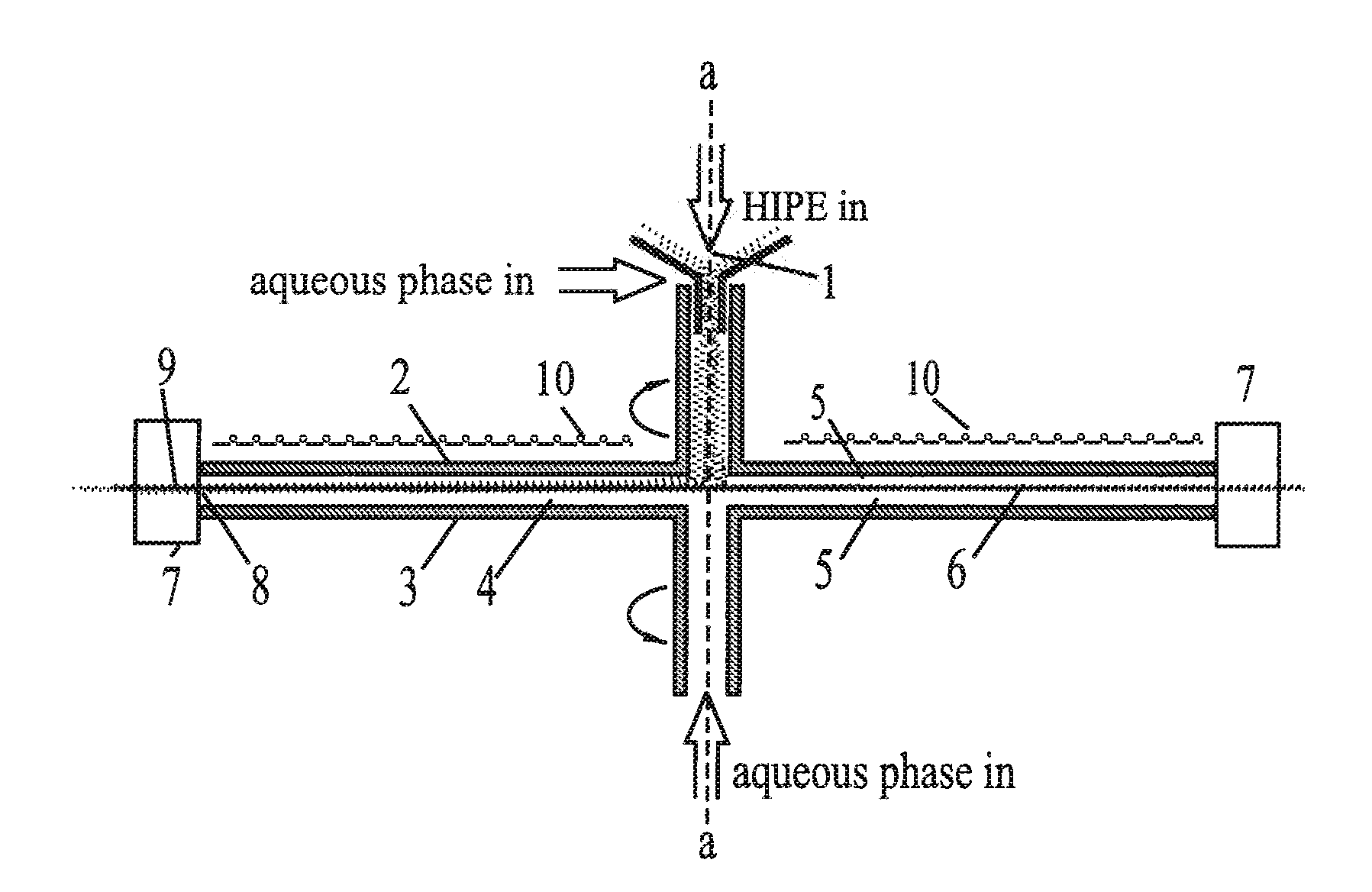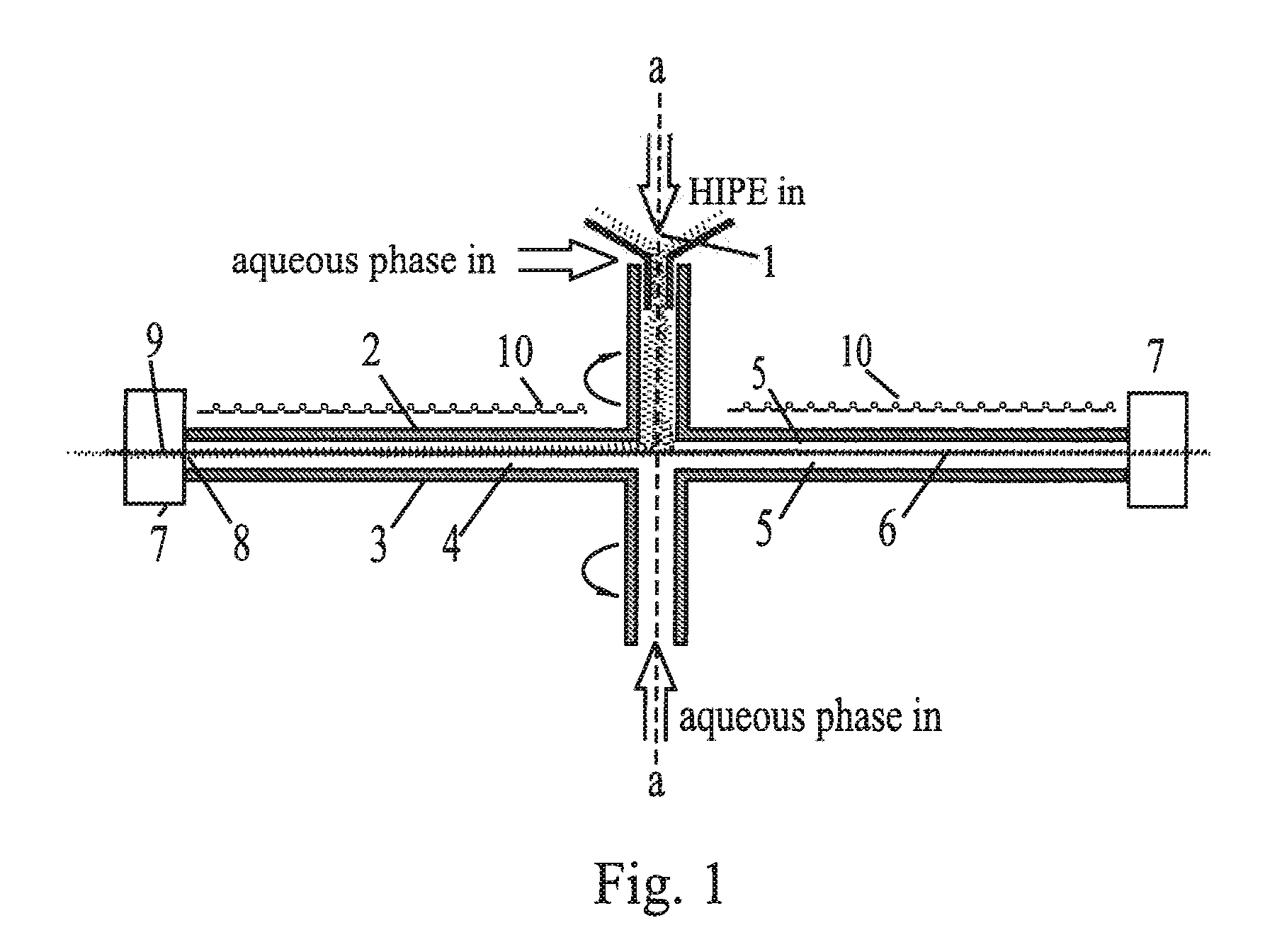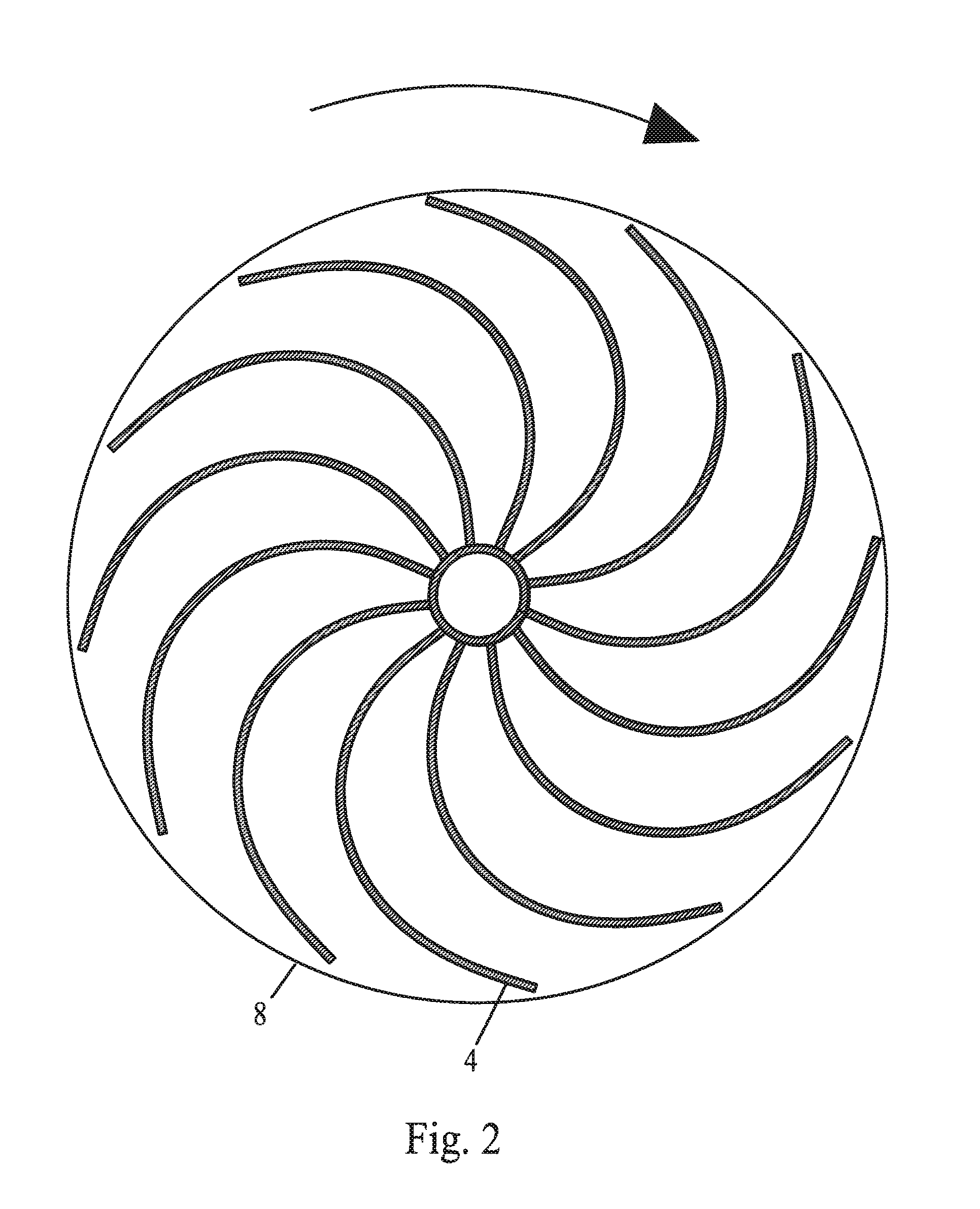Reactors for forming foam materials from high internal phase emulsions, methods of forming foam materials and conductive nanostructures therein
a technology of high internal phase and foam material, which is applied in the direction of moving filter element filter, separation process, filtering, etc., can solve the problems of low polymer thermal conductivity, impede the conversion and crosslinking of polymers, and short carbon nanotubes produced by conventional methods
- Summary
- Abstract
- Description
- Claims
- Application Information
AI Technical Summary
Benefits of technology
Problems solved by technology
Method used
Image
Examples
Embodiment Construction
[0037]According to some embodiments, a method for forming a polymeric foam can include: axially feeding a high internal phase emulsion (HIPE) including an aqueous phase and an oil phase into a workspace defined between opposed counter-rotating centrifugal impellers having a common axis of rotation; advecting the HIPE in an orthogonal flow within the workspace away from the axis of rotation to a periphery of the workspace; curing the HIPE within the workspace to thereby form a HIPE foam at the periphery of the workspace; and withdrawing the HIPE foam through the periphery of the workspace.
[0038]In one embodiment, the HIPE foam is withdrawn through the periphery of the workspace. In another embodiment, the HIPE can be axially fed into the workspace while the HIPE foam is withdrawn. In another embodiment, however, the HIPE foam can be withdrawn when the HIPE is not axially fed into the workspace.
[0039]In one embodiment, the aforementioned method for forming a polymeric foam further inc...
PUM
| Property | Measurement | Unit |
|---|---|---|
| Pressure | aaaaa | aaaaa |
| Acceleration | aaaaa | aaaaa |
| Electrical conductor | aaaaa | aaaaa |
Abstract
Description
Claims
Application Information
 Login to View More
Login to View More - R&D
- Intellectual Property
- Life Sciences
- Materials
- Tech Scout
- Unparalleled Data Quality
- Higher Quality Content
- 60% Fewer Hallucinations
Browse by: Latest US Patents, China's latest patents, Technical Efficacy Thesaurus, Application Domain, Technology Topic, Popular Technical Reports.
© 2025 PatSnap. All rights reserved.Legal|Privacy policy|Modern Slavery Act Transparency Statement|Sitemap|About US| Contact US: help@patsnap.com



